This was demonstrated (in class on
Wednesday) using a Van de Graaff generator. We first
position a grounded metal rod with a rounded tip a few
centimeters from the top of the generator.
Periodically, once sufficient charge builds up on the dome
of the generator, an audible visible spark (about 3 inches
long) will jump to the tip of the ground rod.
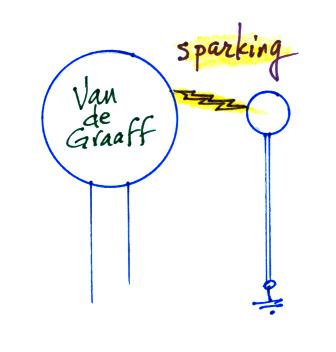 |
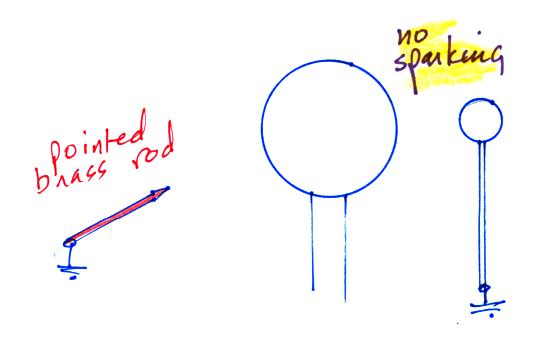 |
If a pointed, grounded rod is brought
to within about 20 centimeters of the Van de Graaff, the
sparking to the grounded round ball stops. The pointed
rod is drawing off electricity from the generator before
sufficient charge is able to build up and spark across to
the grounded ball.
The terms drawing off or
throwing off electricity simply refer to whether current
is flowing to or from the pointed rod.
Franklin originally thought a lightning rod would
work in this way.
2. Suggestion and proof that thunderstorm and laboratory electricity were the same.
Franklin saw many similarities between the electricity used in his experiments and lightning.
Both produce light, and the colors of light are similar. Crooked channels. Swift motion. Being conducted by metals. Crack or noise produced during discharge. "Subsisting" in water or ice. "Rending" bodies as current passes through. Killing animals. Melting metals. Catching inflammable materials on fire. Sulphurous smell.
He wondered whether lightning wasn't just a much larger scale form of the same phenomenon and proposed the following experiment (the Sentry box experiment was described in a July 29, 1750 letter)
"To determine the question, whether
the clouds that contain lightning are electrified or not, I
would propose an experiment to be tried where it may be done
conveniently. On the top of
some high tower or steeple, place a kind of sentry-box big
enough to contain a man and an electrical stand. From the middle of the stand let
an iron rod rise and pass bending out of the door, and then
upright 20 or 30 feet, pointed very sharp at the end. If the electrical stand be kept
clean and dry a man standing on it when such clouds are
passing low, might be electrified and afford sparks, the rod
drawing fire to him from a cloud. If
any danger to the man should be apprehended (though I think
there would be none) let him stand on the floor of his box,
and now and then bring near to the rod the loop of a wire
that has one end fastened to the leads, he holding it by a
wax handle; so the sparks, if the rod is electrified, will
strike from the rod to the wire, and not affect him.”
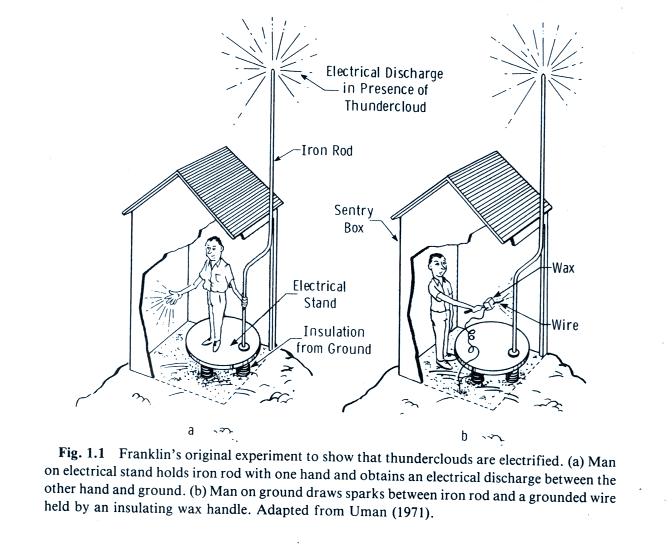
The experiment was performed for the
first time on May 10, 1752 in Marly-la-Ville (near Paris) by
a retired dragoon name Coiffier (Thomas Francois Dalibard, a
naturalist, was absent). Dalibard read an account of
the experiment to the French Academie des Sciences on May
13, 1752. You can read a short description of the experiment
(in French) on the Commune
de
Marly La Ville website.
The experiment was widely repeated
LeMonnier held a 5 m wooden pole with iron wire windings while standing on pitchcake. Sparks were seen coming from his hands and face.
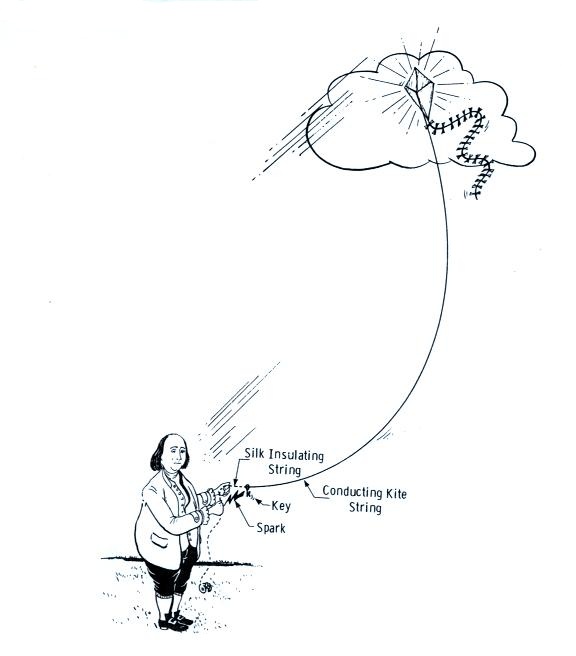
The experiment is thought to have been conducted in June, 1752, but the exact date and location were never recorded. Details of the experiment were sent to Collinson in a letter dated Oct. 19, 1752.
Other people began to repeat the experiment using rockets (mortars) and balloons. In June 1753 de Romas used a kite with a 240 m cord wrapped with violin wire. He produced 20 cm long sparks. Apparently he was later able to produce 3 m long sparks!
The strength of the electricity was often judged by simulating the muscles of animals and observing their reaction.

Both the sentry box experiment and the kite experiment are very dangerous. If lightning were to strike the metal pole or the kite or balloon, the person at the bottom would likely be killed. This did eventually happen
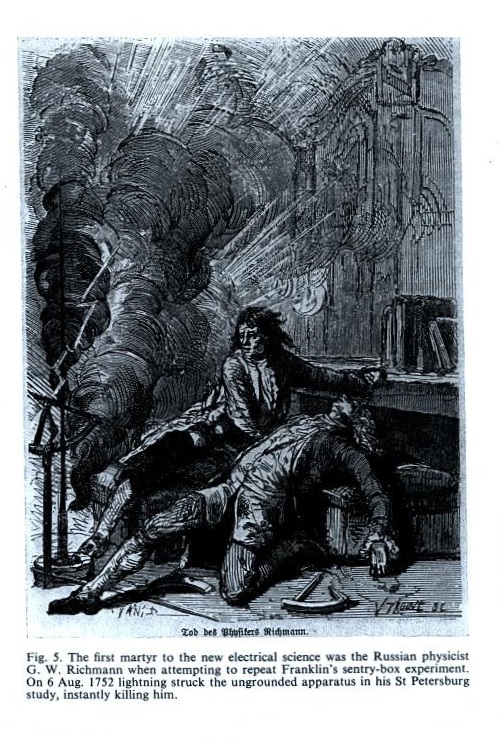
3. Invention of lightning rods
“There is
something however in the experiments of points, sending
off, or drawing on, the electrical fire, which has not
been fully explained, and which I intend to supply in my
next. For the doctrine of points is very curious, and the
effect of them truly wonderful; and, from what I have
observed on experiments, I am of opinion,
that houses, ships, and even towns and churches may be
effectually secured from the stroke of lightning by their
means; for if, instead of the round balls of wood or
metal, which are commonly placed on the tops of the
weather-cocks, vanes or spindles of churches, spires, or
masts, there should be put a rod of ion 8 or 10 feet in
length, sharpen’d gradually to a point like a needle, and
gilt to prevent rusting, or divided into
a number of points, which would be better – the electrical
fire, would, I think, be drawn out of a cloud silently,
before it could come near enough to strike; only a light
would be seen at this point, like the sailors corpusante.”
and my favorite quotation:
"It has pleased God in his goodness to mankind, at
length to discover to them the means of securing their
habitations and other buildings from mischief by
thunder and lightning ..."
Here Franklin was anticipating and seeking
to counter opposition from religious authorities
(lightning was considered by many to be a form of
divine retribution).
Metal (nail) rods were often linked together as shown below (some fragments of Franklin's original lightning rods still exist, in one case inside a building and next to dry wooden beams). The links tended to rupture.
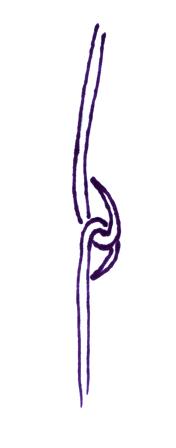
how does the rod work
what material should be used
termination in air
grounding
attachment to structure
height above the structure
area protected by the rod
"Lightning had been regarded as a divine expression, a manifestation against which there could be no possible protection, except prayer and the ringing of church bells. Such bells cast in medieval times often bore the legend "Fulgura frango" ("I break up the lightning"). With the passage of time, however, it was realized that bell ringing during a storm was a very hazardous remedy, especially for the ringer on the ropes becuase so many were killed by the very stroke they attempted to disperse." In 33 years of lightning strokes on 386 church steeples 103 bell-ringers were killed. (Ref (2))
A showdown took place in the Piazza in Siena Italy in Spring 1777. One side doubted the electrical nature of lightning and the efficacy of lightning rods. A second, more progressive side, had ordered a lightning rods to be installed on the cathedral and the tower of City Hall (facing the plaza where the famous Palio is run).
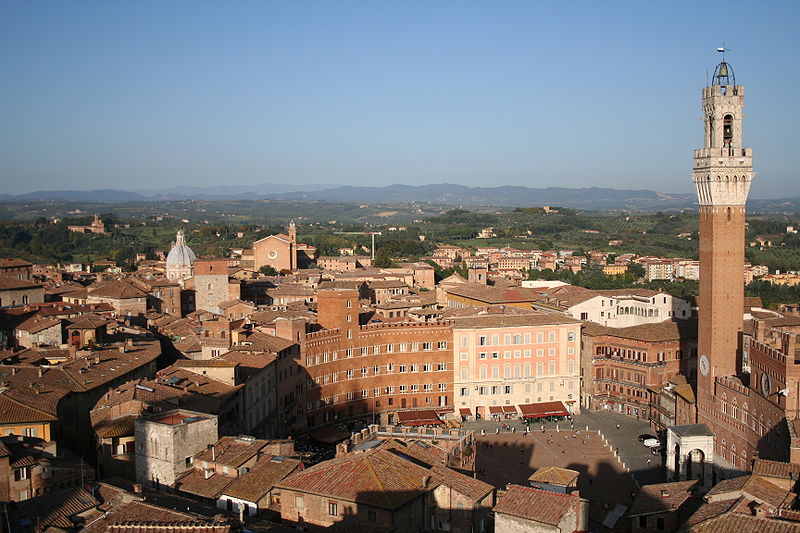
"On the afternoon of 18 April clouds began to form, distant thunder was heard, and the Siennese began moving to their Piazza with all eyes focused on the lightning rod tip. At about five o'clock - lightning struck. A ball of fire, accompanied by sparks, smoke, and an odor of sulphur ran the full length of the tower and disappeared into the ground leaving the tower unharmed." (source of the image above)
Lightning rods were quickly adopted throughout Italy (and also in other Catholic countries because they were approved by The Pope)
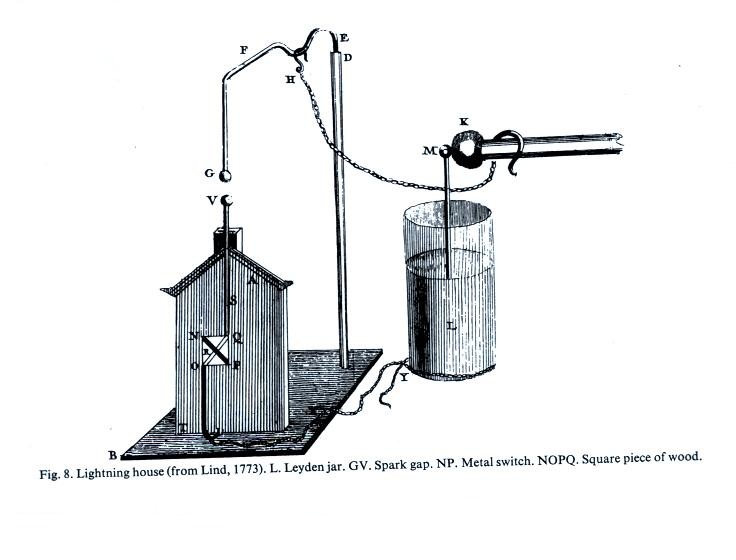
A lightning house, a common demonstration of the efficacy of lightning rods. The small square in the side of the house is filled with gunpowder. When a spark is delivered to Point V it will travel down Conductor S, spark across the Gap Q-O and ignite the gunpowder. If a metal connection is made between Q and O, the current will flow through a metal conductor all the way to the ground. There won't be any sparking and the gunpowder won't be ignited.
May 1752 Congratulations from the King of France
July 1753 Master of Arts from Harvard University
Sept. 1753 Master of Arts from Yale University
Nov. 1753 Copeley Gold Medal, Royal Society, London
April 1756 Fellow (w/o fee) of the Royal Society
Feb. 1759 University of St. Andrews Scotland Doctor of Civil and Canon Laws
April 1762 Oxford Doctor of Civil Laws
The remainder of today's class was spent beginning to review some important laws from electrostatics. As often as possible we'll incorporate examples from and applications to the field of atmospheric electricity.
Coulomb's Law
We'll start with Coulomb's Law. Coulomb's law gives the strength and direction of the force that q1, a point charge, will exert on another point charge, q2.
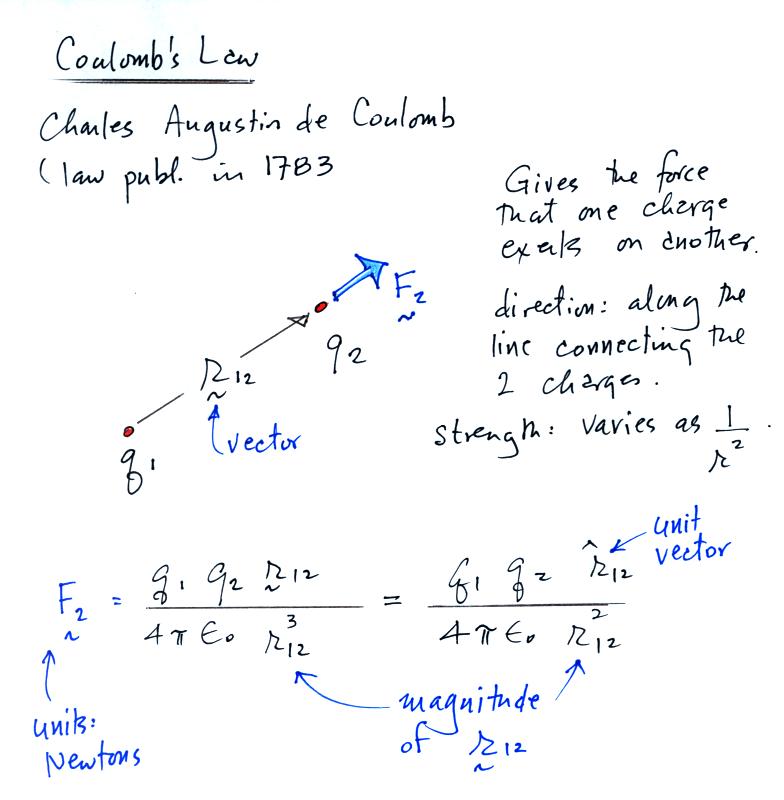
A few comments about notation. The "squiggly" line under a variable ( ~ ) denotes a vector. The caret above a variable
( ^ ) indicates a unit vector. The indices r12 indicate that the vector points from 1 toward 2. We'll also mostly be using the mks system of units in this course.
Units
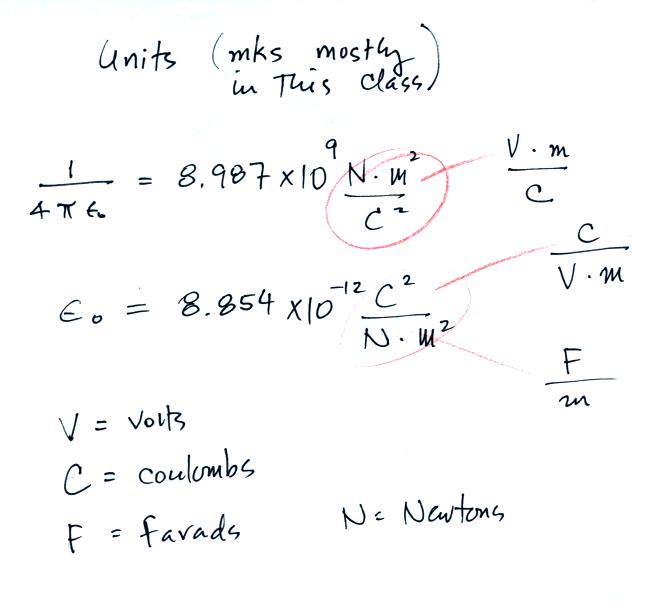
The principle of superposition applies with Coulomb's law. The figure below wasn't shown in class.
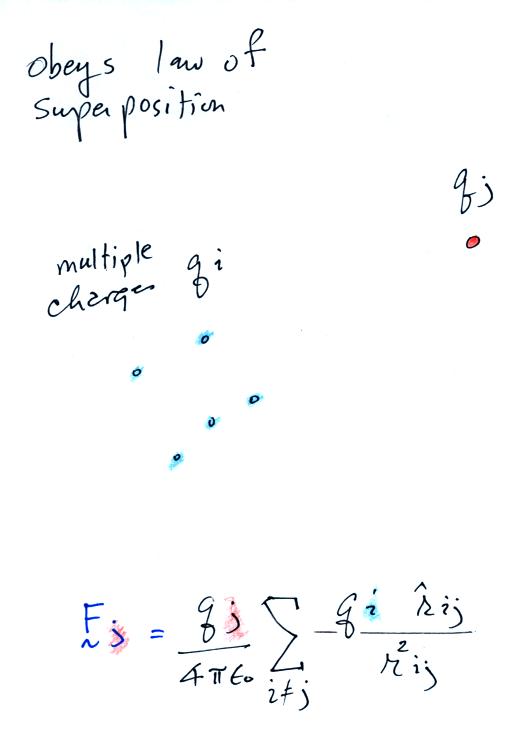
Electric Field
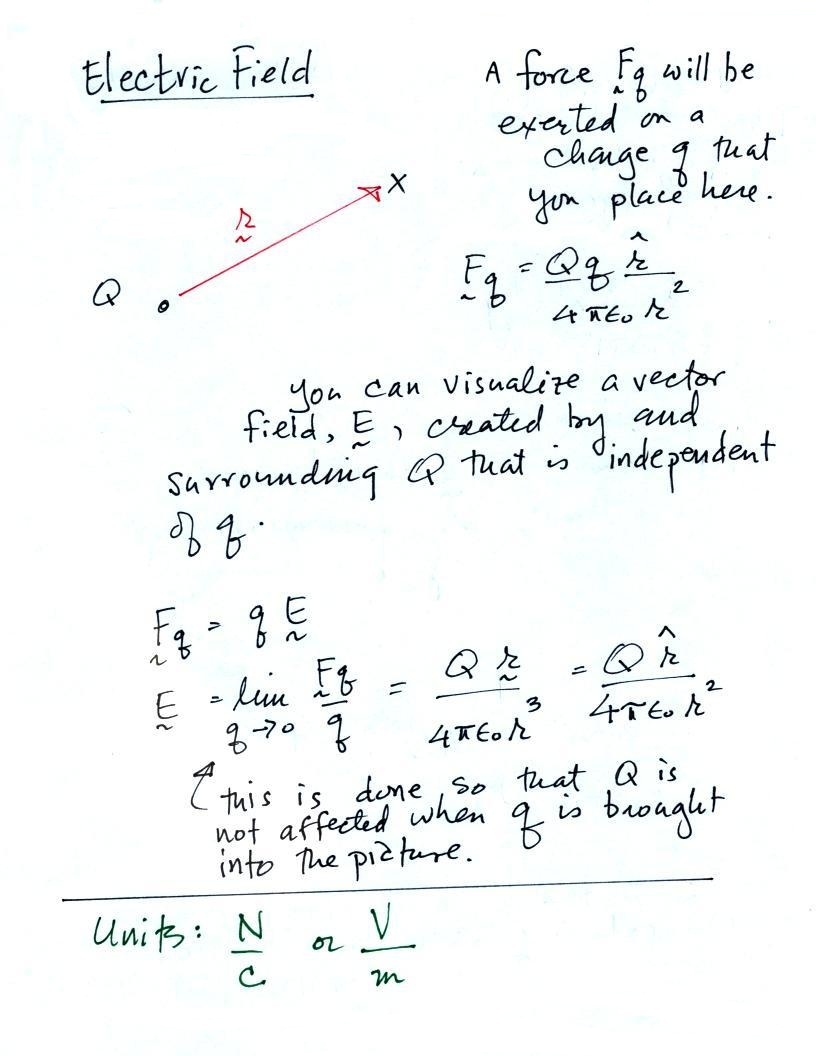
If a charge q is placed in the vicinity of a charge Q, we could use Coulomb's law to determine the force that Q exerts on q. We can imagine a vector field, the electric field, existing around Q even before q is brought into the picture. Multiplying q times E would give the force that Q exerts on q. The expression for electric field is shown above.
Electric field near an infinite line of charge
We'll try an example problem: calculating the electric field a distance r away from an infinitely long line of charge (charge is distributed uniformly along the line). The symbol λ will stand for the line charge density (careful: λ is often used for conductivity as well)
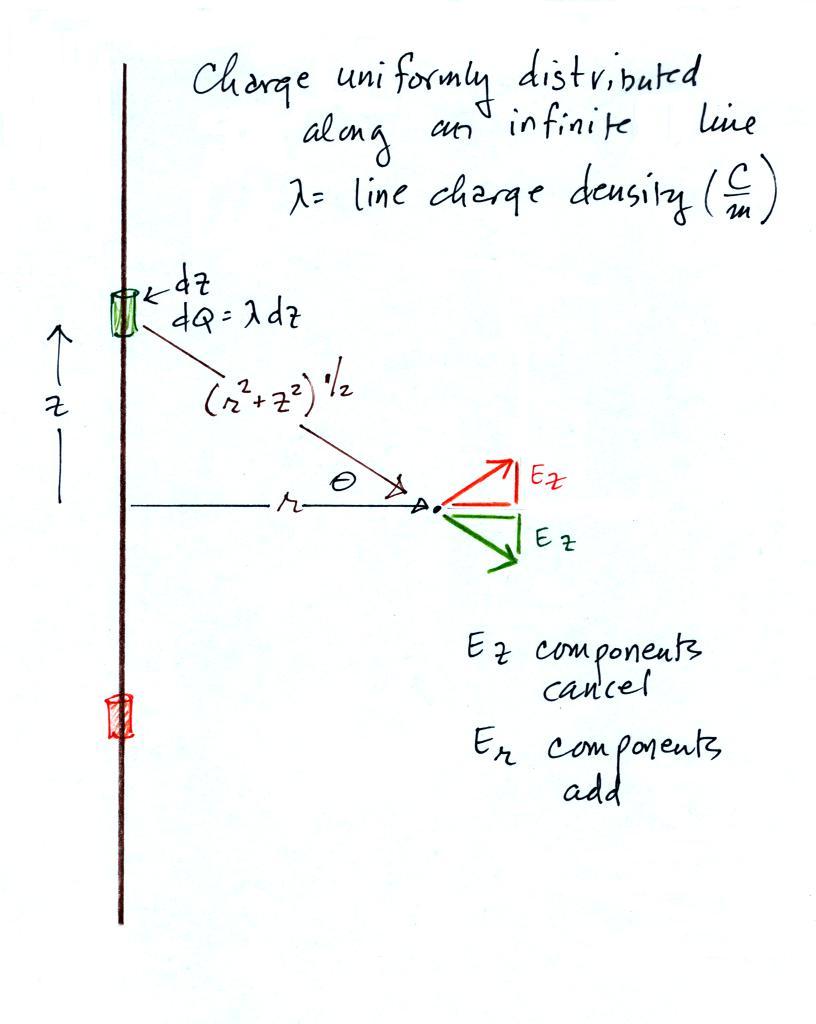
We'll write down expressions for the contributions to the field dE from short segments above and below z = 0. The z components of the E field at Point r point in opposite directions and cancel out. The radial components point in the r-direction (away from line of charge) and add.
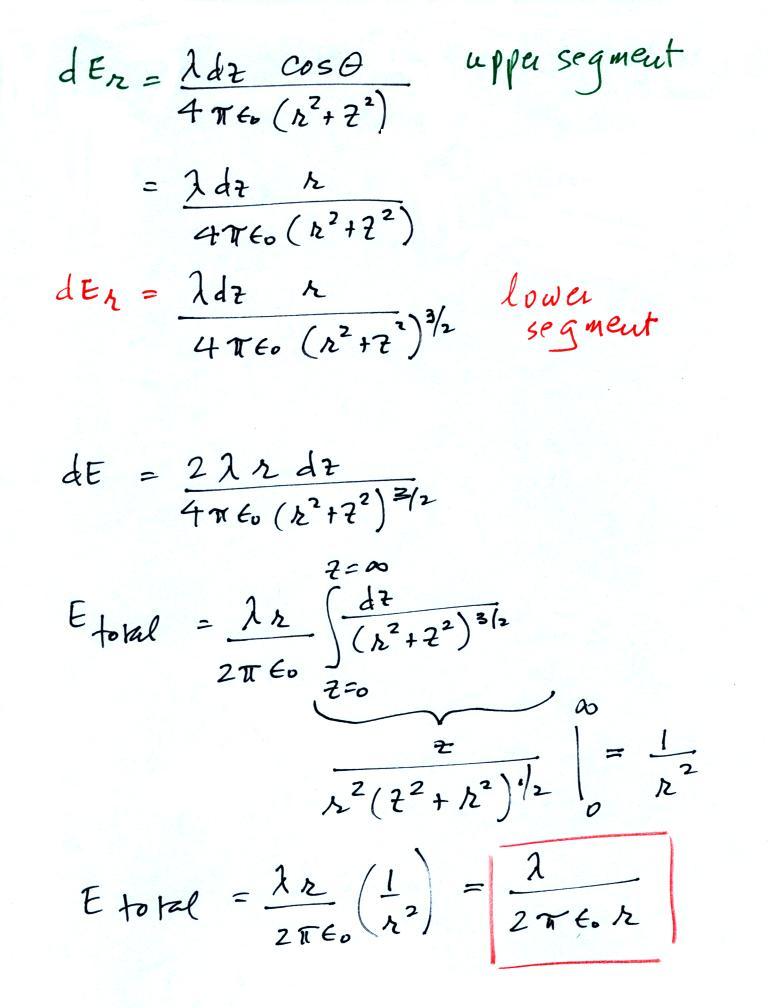
We'll come back to this problem later in this lecture and solve it in a much simpler way.
Gauss' Law (integral form)
Next we'll consider a charge completely surrounded and enclosed by a surface, S.
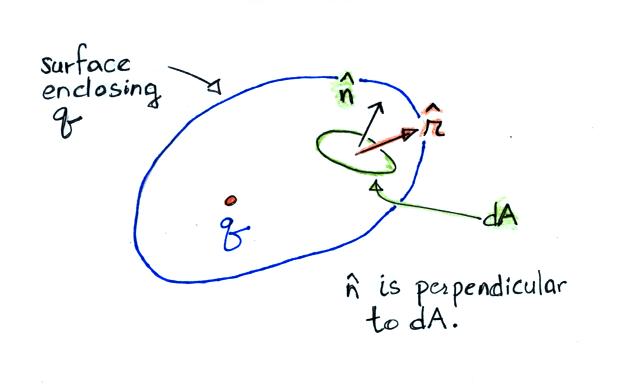
The vector r points outward from q and n is a unit vector normal (perpendicular) to the small increment of area dA.
We will evaluate the following surface integral

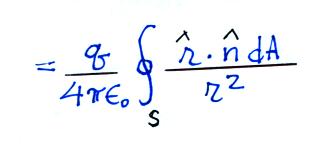
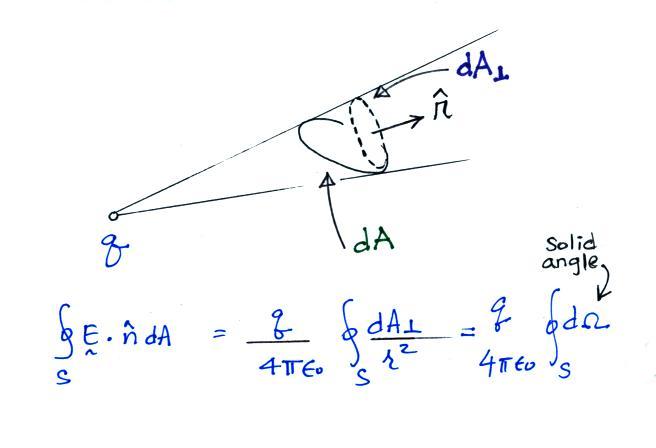
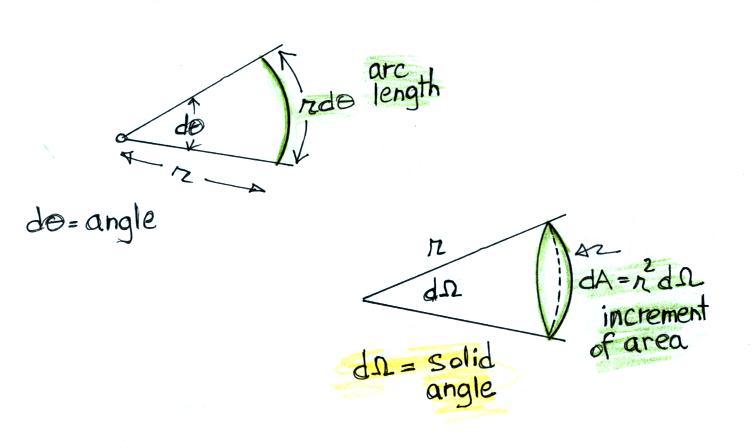
It is relatively easy to show that the integral of solid angle over a surface is 4 π.
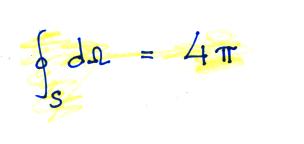

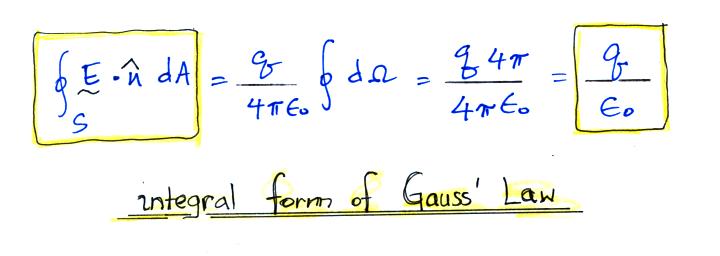
This is as far as we got in class today. Nonetheless I've included a quick application of Gauss' Law below.
Infinite line of charge revisited
To see how useful this expression can be we'll return to our earlier problem involving the infinite line of charge and use Gauss' Law to determine the electric field. We'll see that it is a much easier process.
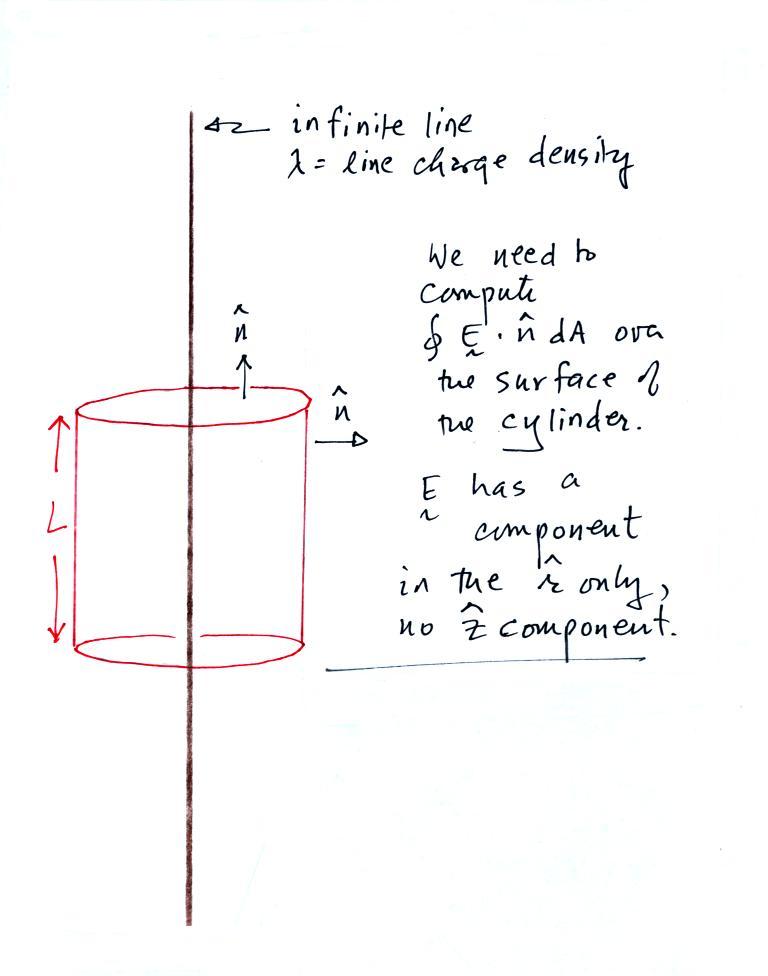
The crucial part of the problem is the choice of surface. We draw a cylinder centered on the line of charge. This is the area that we will integrate E over in the Gauss Law expression. It is also important to realize that the E field has a radial component only.
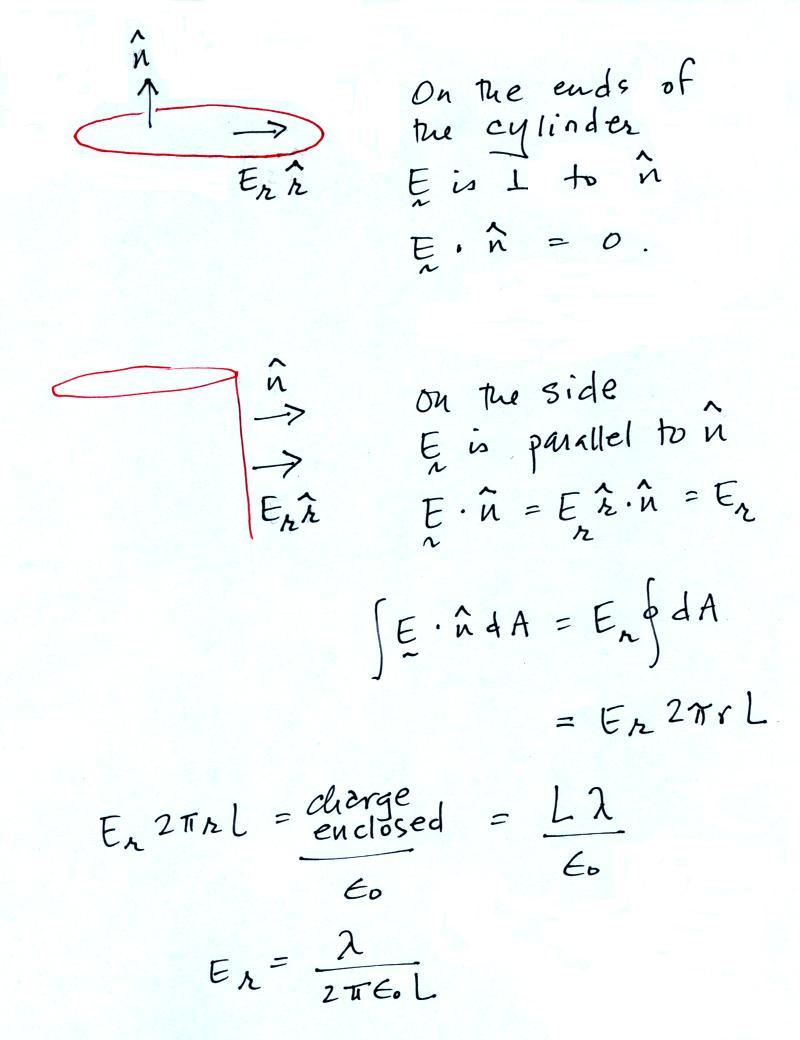
There is no contribution to the surface integral from the ends of the cylinder (E is perpendicular to the normal vector, the dot productand E and n is therefore zero). E is parallel to the normal vector along the side of the cylinder. E is also constant on the side of the cylinder (E is a function of r and r stays constant as you integrate over the surface of the cylinder side). In the end we obtain the same expression for E as we did in the earlier example.
(1) B. Dibner, Benjamin Franklin, Lightning, Ch. 2 in Lightning Vol. 1, ed. by R.H. Golde, Academic Press, London, 1977.
(2) E.P. Krider, "Benjamin Franklin and Lightning Rods," Physics Today, 42-48, Jan., 2006. (link to a PDF file)